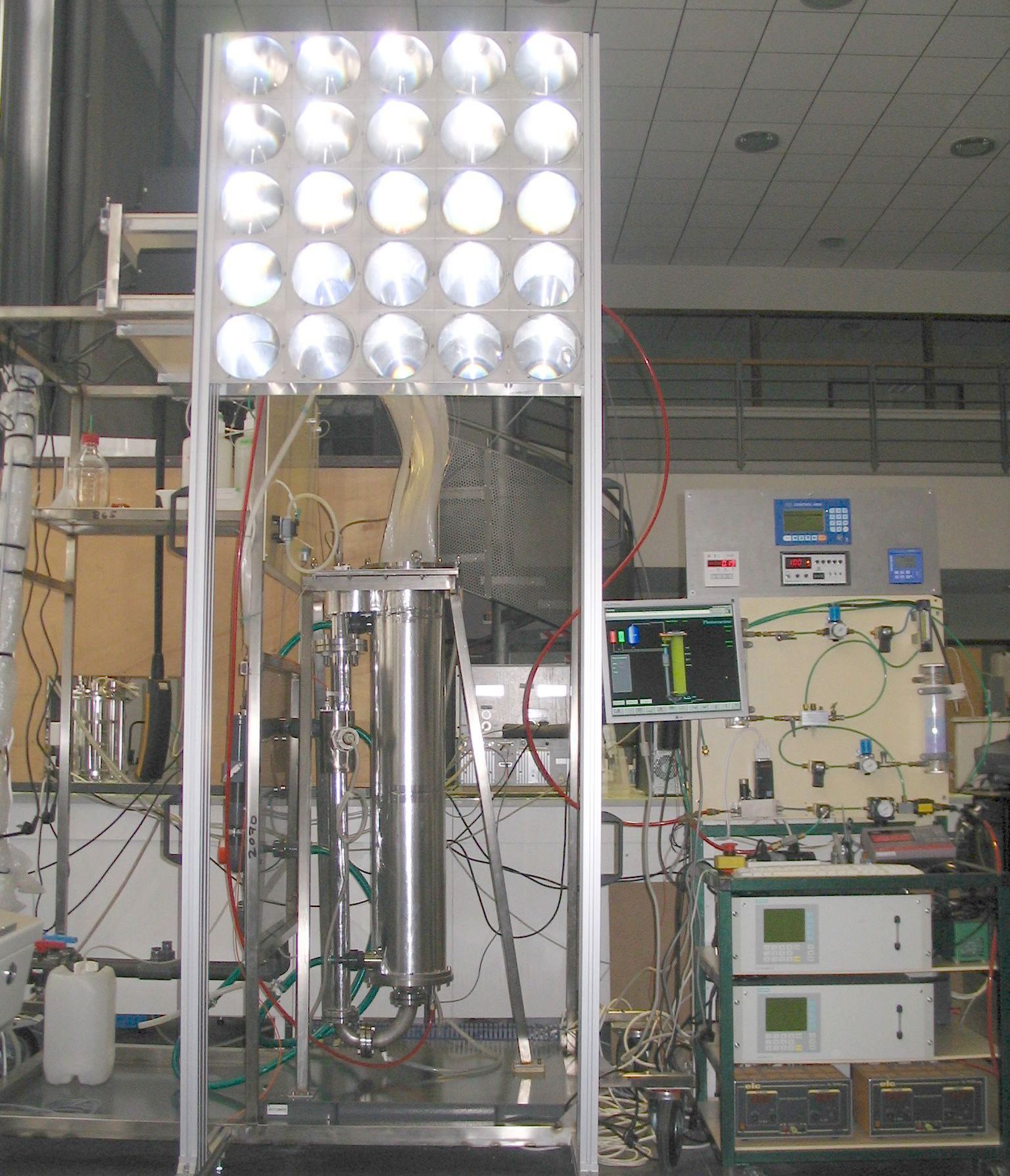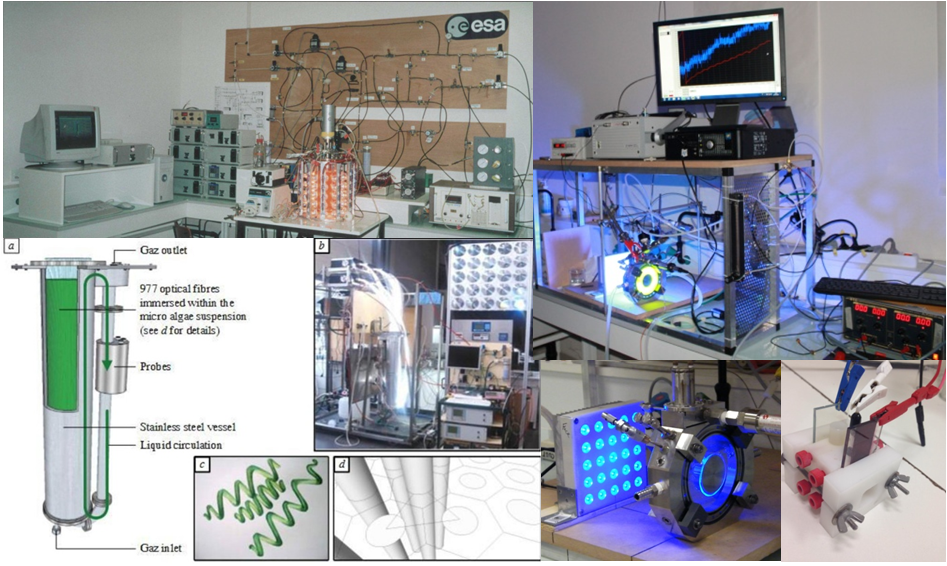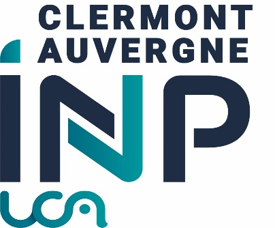 |
Engineering of Photo-reactive Systems Contacts : JF. Cornet, J.Dauchet, F. Gros, T. Vourc'h Video : Solar Fuel Engineering (Urban Energy Pact - 2021) |
This research mainly concerns processes using solar (or artificial) visible light to produce molecules of interest (biomass, high value-added molecules, solar fuels such as H2, syngas, methane, methanol, ethanol) or to regenerate the atmosphere of artificial closed systems (CO2 consumption and O2 production).
We focus our attention on a sound understanding of processes like photobioreactors, photoreactors and photo-electrochemical cells in order to simulate, design and optimize future industrial units with high energy efficiency and kinetic performances, compatible with renewable-solar energy requirements and platform molecules needs.
For this purpose, we develop (and validate at laboratory or pilot scale) multi-scale and reified predictive knowledge models based on:
- the theoretical prediction or experimental determination of catalysts and microalgae optical properties (DFT, Kramers-Krönig) ;
- the calculation of related radiative properties (Maxwell equations) ;
- the resolution of photons or charges carrier transport (Boltzmann equations) ;
- the local formulation of thermokinetic coupling (mechanistic or linear thermodynamics of irreversible processes based approaches) ;
- the integration at the process scale (unit module and power station) and the calculation of the kinetic and thermodynamic efficiencies ;
- the consideration of dynamic solar fluctuations.
A reflection on theformulation in path integrals of these models and their resolution by the Monte Carlo method is carried out within the framework of the EDStar. This approach allows easy management of scale imbrications and geometric complexity.
Experimentally validated at small scale using highly instrumented devices, this methodology is applied with mutual enrichment to the engineering of natural and artificial photosynthesis. The original pilots developed to date (scale from 1 L to 30 L, up to 1 m2 collecting surface) and designed from models coupled to optimization procedures (constructal theory, minimization of entropy production, sensitivities analysis, ...) suggest that thermodynamic efficiencies could reach between 10 and 20% for the solar production of energy vectors. They are tested at TRL 5 in actual solar conditions on the platform Solar PAVIN (heliostat of 3 kW).
|
Read more ... |
 |
Main academic contracts
The team is involved in numerous European ESA contracts under the MOU MELiSSA as New Generation of Photobioreactors Characterization (2016-18). It is also involved in many national projects (CNES, CNRS, ANR,...) such as Biosolis (2008-11), Tech'Biophyp (2011-15) and represents an important part of the research capacity of LabEx IMobS3 Challenge 3 on the production of energy vectors for mobility.
Software and original materials
StarSchiff software of radiative particle calculation for soft particles with complex shapes (developed with the MesoStar company)
Optical bench with integrating sphere of 6 inches, instrumented lab-scale photoreactors and photobioreactor, Solar DiCoFluV pilot plant, photo-electrochemical cells,...
Main collaborations and networks
Partner laboratories:
- LAPLACE (team Grephe, Toulouse)
- RAPSODEE (Albi)
- Institut Fresnel (team HIPE, Marseille)
- PROMES (Odeillo and Perpignan)
- GEPEA (Saint-Nazaire)
Réseaux :
- MOU MELiSSA
- Research CNRS federation FédEsol
- GdR (Solar Fuels, Tamarys)
- SFT, SFGP, Codegepra,…
Recent or current PhD Theses
- Vincent ROCHATTE : « Development and modeling of a solar photobioreactor with internal dilution of radiation » (2016).
- Ghiles DAHI : « Experimental study and radiative approach modeling of a photoreactor for hydrogen production » (2016).
- Julien CHARON : « Resolution by the Monte Carlo method of integral formulations of the problem of electromagnetic scattering by a suspension of particles with complex geometries » (2017).
- Azin ESKANDARI : « A preliminary theoretical and experimental study of a photo-electrochemical cell for solar hydrogen production » (2019).
- Caroline SUPPLIS : « Modelling and experimental study of the solar hydrogen production in photoreactor » (2020)
- Victor GATTEPAILLE : « Multi-scale models of solar photobioreactors and Monte Carlo method » (2021).
- Guillaume FOIN : « Experimental and theoretical study of photocatalytic hydrogen production in labscale photoreactor » (2020, under progress).
- Aziz BOUZIGUI : « Experimental and theoretical study of hydrogen production in labscale photo-electrochemical cell » (2020, under progress).
- Daniel YAACOUB : « Analysis and modelling of generation, transport and conversion modes of electronic excitation energy for natural or artificial photosynthesis engineering » (2021, under progress).







